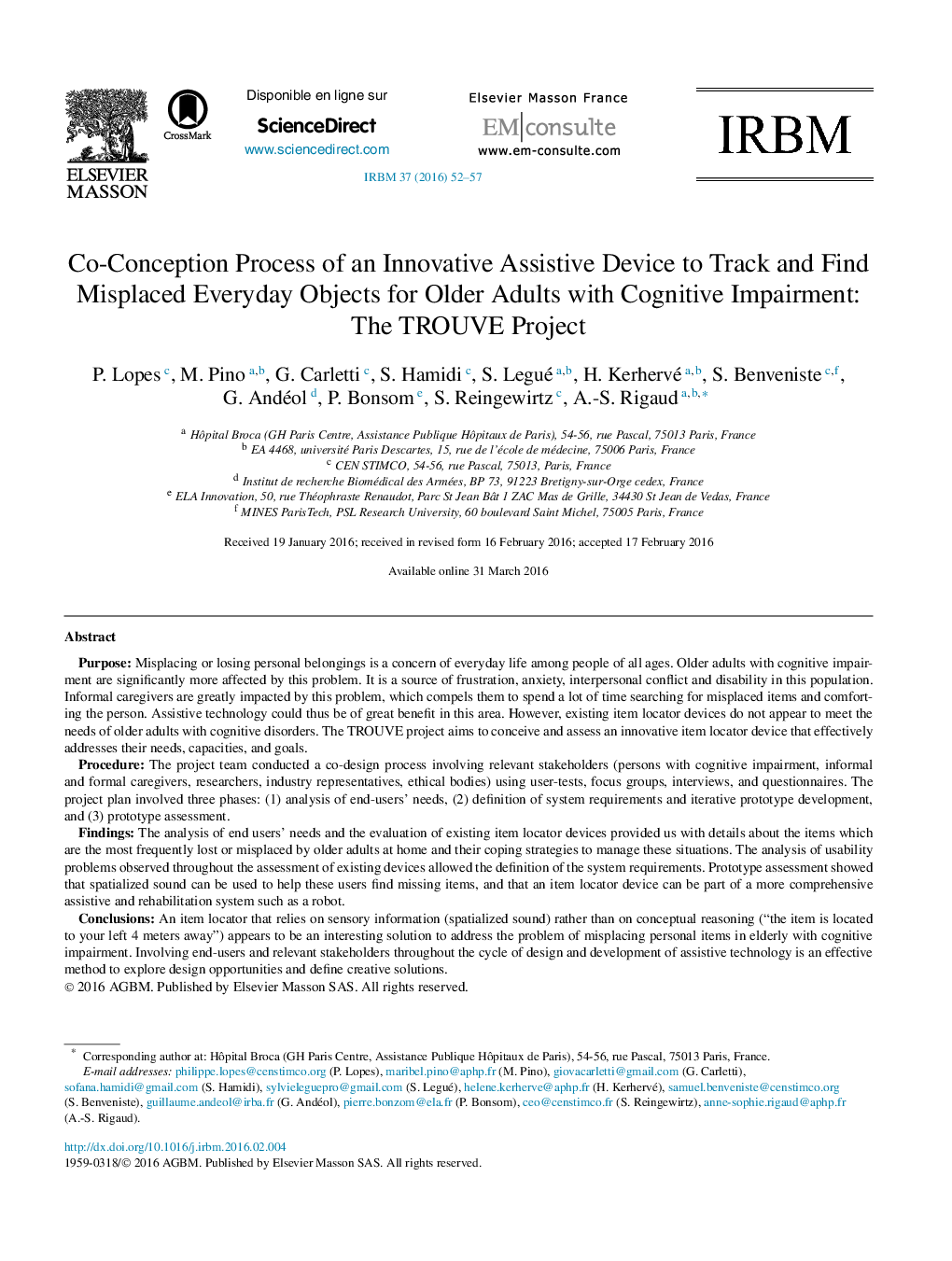| کد مقاله | کد نشریه | سال انتشار | مقاله انگلیسی | نسخه تمام متن |
|---|---|---|---|---|
| 870718 | 910015 | 2016 | 6 صفحه PDF | دانلود رایگان |

Purpose: Misplacing or losing personal belongings is a concern of everyday life among people of all ages. Older adults with cognitive impairment are significantly more affected by this problem. It is a source of frustration, anxiety, interpersonal conflict and disability in this population. Informal caregivers are greatly impacted by this problem, which compels them to spend a lot of time searching for misplaced items and comforting the person. Assistive technology could thus be of great benefit in this area. However, existing item locator devices do not appear to meet the needs of older adults with cognitive disorders. The TROUVE project aims to conceive and assess an innovative item locator device that effectively addresses their needs, capacities, and goals.Procedure: The project team conducted a co-design process involving relevant stakeholders (persons with cognitive impairment, informal and formal caregivers, researchers, industry representatives, ethical bodies) using user-tests, focus groups, interviews, and questionnaires. The project plan involved three phases: (1) analysis of end-users' needs, (2) definition of system requirements and iterative prototype development, and (3) prototype assessment.Findings: The analysis of end users' needs and the evaluation of existing item locator devices provided us with details about the items which are the most frequently lost or misplaced by older adults at home and their coping strategies to manage these situations. The analysis of usability problems observed throughout the assessment of existing devices allowed the definition of the system requirements. Prototype assessment showed that spatialized sound can be used to help these users find missing items, and that an item locator device can be part of a more comprehensive assistive and rehabilitation system such as a robot.Conclusions: An item locator that relies on sensory information (spatialized sound) rather than on conceptual reasoning (“the item is located to your left 4 meters away”) appears to be an interesting solution to address the problem of misplacing personal items in elderly with cognitive impairment. Involving end-users and relevant stakeholders throughout the cycle of design and development of assistive technology is an effective method to explore design opportunities and define creative solutions.
Journal: IRBM - Volume 37, Issue 2, April 2016, Pages 52–57